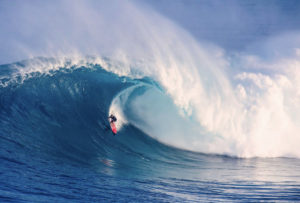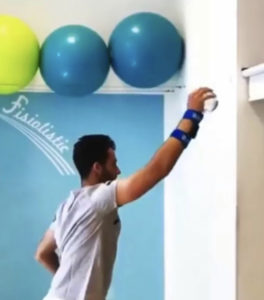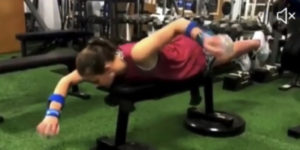The Surfer’s Rotator Cuff Exercise
 The ability to catch a wave is to get into position for that wave. Getting to that sweet spot is predicated on the ability to paddle to that spot. However, the ability to paddle is dependent upon shoulder power and maneuverability. ShoulderSphere movement-simulation functional rotator cuff strengthening technique is the most effective and efficient way to train the power required by the rotator cuff muscles to stabilize the shoulder while allowing rapid acceleration and deceleration multidirectional movements demanded when paddling to that sweet spot.
The ability to catch a wave is to get into position for that wave. Getting to that sweet spot is predicated on the ability to paddle to that spot. However, the ability to paddle is dependent upon shoulder power and maneuverability. ShoulderSphere movement-simulation functional rotator cuff strengthening technique is the most effective and efficient way to train the power required by the rotator cuff muscles to stabilize the shoulder while allowing rapid acceleration and deceleration multidirectional movements demanded when paddling to that sweet spot.
Elastic bands and dumbbells are used to strengthen the muscles that MOVE the shoulder, BUT DO NOT train the muscles that STABILIZE the shoulder. THIS is where the difference is between the ShoulderSphere strengthening technique and all other forms of shoulder exercises. One must understand that different muscles are used in MOVING the shoulder and in STABILIZING the shoulder. Although instructed as “rotator cuff” exercises using the elastic band or weights, these are no more than alternative directional glorified shoulder movement exercises. Rotator cuff muscles do get strengthened, but only secondarily and not purely isolated. ShoulderSphere technique isolates and trains both power and responsiveness of the rotator cuff muscles like no other. https://www.shouldersphere.com/about/.
ShoulderSphere dryland paddling simulation moves can be performed on an exercise ball, on the bench, or standing up. (See figures and videos below). Paddling simulation moves while facing down on the exercise ball or the bench are more realistic and call for greater core engagement than standing up. It is important go through the ENTIRE range of swim / paddling motion in slow deliberate arm movements. Spend 3 seconds for each stroke cycle with concentration while maintaining spin of the ball inside the globe. You may interval train with high intensity by keeping in high power zone “red light” for 5 strokes, followed by 5 easy ones in green, then followed by 4 – 4, then 3 – 3, 2-2, 1-1 for a total of 30 strokes for each session. (~ 3 seconds per stroke cycle for 30 stroke cycles equates to about 90 second workout only!). Then switch arms, do the other arm with same regimen. This will be one set for each arm. Try to do a total of 3 sets each arm, 2-3 times a week. Be sure to give yourself at least 24 hour recovery time in between training sessions. You will absolutely show measurable improvement in your shoulder strength and power by the end of 8-10 weeks, as studies have shown.
Work your way up slowly over a few week’s time. As you get stronger, you can challenge yourself and see how far you can go by doing reverse HIIT sequence 1-1, 2-2, 3-3.. see if you can go up to 10-10 … that is 110 stroke cycles for a 5 1/5 minute dryland swim equivalent training. This volume is necessary for those surfing enthusiasts because the cumulative time in water is A LOT LONGER.
It is your choice to use either the smaller F2 model or the larger A7 model, depending upon how strong you are. The A7 is 5 times more challenging to use than the F2. Or, think of it as it takes 5 moves using the F2 to equal to one move using the A7.
Catch the wave 🤙!


